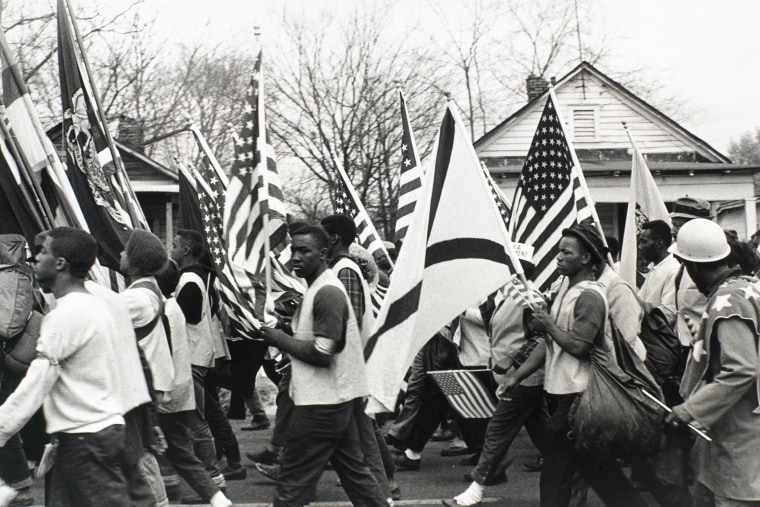Five decades have passed since thousands of fearless people organized several marches from Selma to Montgomery to peacefully protest voter discrimination blacks were facing in Alabama and all over the south. These are five things you should know about the historic marches.
1. Activists in Selma were organizing voting rights campaigns well before the modern Civil Rights Movement.
Selma's NAACP chapter was founded in 1918 by C.J. Adams who later created the Dallas County Voters League (DCVL) to help blacks register to vote. After several years of trying to organize voting efforts, he became a target of the police and and left Selma in 1948.
The DVCL was quickly revived by activists, namely Amelia Boynton Robinson and her husband Samuel William Boynton, who combined the need for economic autonomy with voting rights -- by the 1950s they were holding weekly meetings. In 1963, DCVL and members of the Student Nonviolent Coordinating Committee (SNCC) worked together on voter registration efforts but were met with brutal resistance. At that point, they sought the assistance of Dr. Martin Luther King and his team of footsoldiers.
2. Only 2% of eligible black voters were able to vote in Dallas County, where Selma is located.
In the 1960s, Alabama Governor George Wallace fiercely opposed desegregation across the state of Alabama and the local county sheriff in Dallas County led an opposition movement to prevent black voter registration. At that time, only 2% of Selma's eligible black voters, 300 out of 15,000, were able to register in the county.
Photo Essay: How events in Selma 50 years ago changed America forever
3. The shooting death of Jimmie Lee Jackson by an Alabama state trooper inspired the Selma to Montgomery marches.
On Feb. 18, 1965, white segregationists attacked a peaceful voting rights demonstration organized by the Southern Christian Leadership Conference (SCLC) in Marion, Ala. In the midst of the chaos, civil rights activist Jimmie Lee Jackson was beaten and shot to death by Alabama State Trooper James Bonard Fowler. Jackson was a deacon of the St. James Baptist Church in Marion and had tried to register to vote, to no avail, for four years.
His death inspired SCLC leader James Bevel to organize a massive 54-mile protest from Selma to Montgomery on March 7. Demonstrators didn't get far; the group of 600 were attacked by Alabama state troopers on the Edmund Pettis Bridge and forced to turn back to Selma. The violent scene was televised, became known as "Bloody Sunday," and compelled even more activists to join the voting rights efforts in Alabama.
4. It took three attempts for marchers to successfully walk from Selma to Montgomery.
Dr. King led a second protest on March 9 and was, again, met with state trooper resistance. Later that night, another fatality occurred when a white mob beat white minister James Reeb to death, bringing even more national attention to the movement. Despite Gov. Wallace's attempt to stop another march, Dr. King and others were able to successfully organize a third and final protest.
On March 21, 1965, with a pledge to pass new voting rights legislation from President Lyndon Johnson, 2,000 marchers left Selma with the protection of the U.S. Army and National Guard. Protesters reached Montgomery on March 25, where they were met by 50,000 supporters at the state capitol to hear speeches from King, Nobel Peace Prize winner Ralph Bunche, and other notable speakers.
Watch: John Lewis says 'Selma' actor 'became Dr. King'
5. Marches led to the passage of the Voting Rights Act.
After enduring violence and fatalities, the organizers and participants of the Selma marches finally won the battle against the racist voting system in the U.S. On Aug. 6, 1965, months after the march, President Johnson signed the Voting Rights Act into law, prohibiting racial discrimination in voting. This was a landmark victory in the Civil Rights Movement that increased the participation of black voters in elections and black elected leaders.
